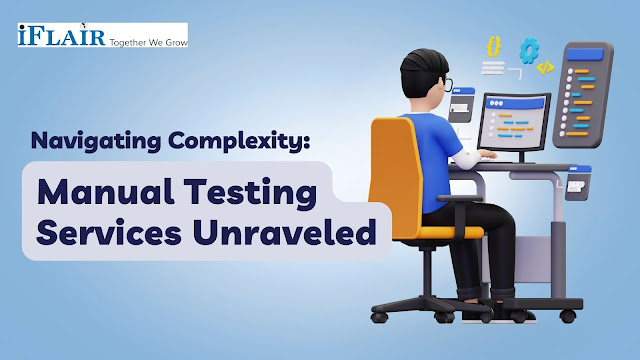The Future of Manual Software Testing: Trends and Emerging Technologies
Software testing is an essential part of the software development lifecycle, ensuring that software products meet the necessary quality standards. Manual software testing, in particular, plays a crucial role in identifying defects and ensuring that the software is user-friendly, accessible, and secure. As technology continues to evolve, so do the trends and emerging technologies that impact manual software testing. In this blog, we will explore the future of manual software testing, the latest trends, and emerging technologies that will shape the industry.
Trends in Manual Software Testing
One of the most significant trends in manual software testing is the increasing emphasis on user experience (UX) testing. User experience has become a critical factor in software development, as developers strive to create products that are intuitive, user-friendly, and accessible. Manual software testing services have a crucial role to play in UX testing, as they allow testers to identify issues that may not be apparent through automated testing. In the future, we can expect to see an even greater emphasis on UX testing, with manual testing services using new techniques and tools to identify and fix UX issues.
Another trend in manual software testing is the increasing use of artificial intelligence (AI) and machine learning (ML) in testing. AI and ML technologies are already being used to automate various aspects of software testing, such as test case generation and defect identification. In the future, we can expect to see even greater use of AI and ML in manual software testing, with testers using these technologies to perform tasks such as exploratory testing and regression testing.
Emerging Technologies in Manual Software Testing
One of the most exciting emerging technologies in manual software testing is virtual reality (VR) and augmented reality (AR) testing. VR and AR technologies are already being used in various industries, such as gaming and healthcare, and are now being applied to software testing. These technologies allow testers to simulate real-world scenarios and test software products in a more immersive and realistic environment. In the future, we can expect to see even greater use of VR and AR in manual software testing, with testers using these technologies to test products that require realistic simulations, such as autonomous vehicles and robotics.
Another emerging technology in manual software testing is blockchain testing. Blockchain technology is being used in various industries, such as finance and supply chain management, and requires rigorous testing to ensure its security and functionality. Manual software testing services are essential in blockchain testing, as they allow testers to identify and fix issues that may not be apparent through automated testing. In the future, we can expect to see even greater demand for manual qa testing solutions for blockchain technology, as more industries adopt this technology.
Manual software testing services are also increasingly using cloud-based testing platforms. Cloud-based testing allows testers to access testing environments and tools remotely, enabling greater collaboration and flexibility. In the future, we can expect to see even greater use of cloud-based testing platforms, as they allow manual qa testing services to scale up or down as needed, and reduce the need for expensive hardware and infrastructure.
Conclusion
Manual software testing continues to be an essential part of the software development lifecycle, ensuring that software products meet the necessary quality standards. As technology continues to evolve, so do the trends and emerging technologies that impact manual software testing. From AI and ML to VR and AR, manual software testing services are using new technologies and techniques to identify defects and ensure that software products are user-friendly, accessible, and secure. In the future, we can expect to see even greater use of these technologies, as manual software testing services continue to evolve and adapt to the changing needs of the software industry.
In conclusion, manual software testing services will remain an indispensable part of software development. As the industry continues to evolve, manual qa testing solutions will continue to adapt, leveraging new technologies and techniques to provide even more efficient and effective testing services. By staying up-to-date with the latest trends and emerging technologies, manual software testing services can continue to provide high-quality testing services and help software developers create products that meet the needs of their users.




Comments
Post a Comment